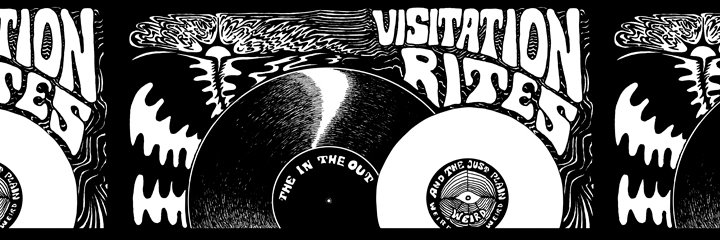
Recorded in Brooklyn, at the heart of the winter of 2008, and completed upon the arrival of the first blooms of spring, Choral offers a rich and unique listening experience. If Mountains’ music is often lumped in with the “ambient” category, this term is surely way too reductive; the associations of elevator music that it calls to mind, or, at best, of airport music (ie., Brian Eno’s seminal Ambient 1. Music for Airports, 1978), do little justice to the complexity of the New York duo’s experiments. Brendon Anderegg and Koen Holtkam’s first met in middle school; far from following the path beaten by Eno, they have been roving immense sonic landscapes ever since, jumping from the dizzying peaks of noise to the fertile valleys of American folk and, with Choral, arriving at a crossroads between the hypnotic drones of a Phill Niblock and the heady loops of a Steve Reich.
Captured live, or almost live, Choral follows the duo’s imagined adventures over this uneven musical terrain. Over the album’s six pieces, Brendon Anderegg and Koen Holtkampt paint misty topographies with tiny brush strokes, patiently sculpting the sonic mass while continually introducing new sounds, each evolving almost imperceptibly. Acoustic instruments (accordion, guitar), rub elbows with synthesizers and electronic incursions by evocative field recordings (an Arizona storm brewing in the viewfinder of a telescope, the crackling of a campfire in Alaska, produced by leaving through the pages of a book). The listener loses himself in a meditative dream-state; unwilling and unable to pry out its numerous instrumental superpositions, he embraces the totality of the sonic mass and takes the opportunity to let his imagination run free.
If I had to fall back on the comparison game, I would probably liken Mountains to Debussy before waxing about its more superficial similarities to Eno. Choral has little in common with the majestic coldness of the British ambient guru; mutatis mutandis, it is as sumptuous, warm and mysterious as the French impressionist composer’s Prelude to the Afternoon of a Fawn (1894). Mountains do everything in their power to heighten the subjectivity of our listening experience: the association of acoustic instruments and synthetic string loops gives rise to a multitude of shimmering harmonics, angelic voices both real and imagined. Little by little, the elongation of each piece in time ("Choral" and "Melodica" clock in at over 12 minutes) and the constant use of repetition make us lose our sense of duration. In its freedom of structure and harmonic language, Choral could almost be said to recall the avant-gardism and tranquil mysteriousness of John Cage’s In a Landscape (1948). The obstinate repetition of simple forms, as graceful as they are strange, ultimately leaves us with nothing but the reminiscences of tonality. And, perhaps, a call for a new musical language.
Words: Sophie Pécaud
Translation: Emilie Friedlander
Originally published in French on Chronicart, Winter 2009.

Like what we're doing here? Just a little pocket change gives Visitation Rites food to live on.




